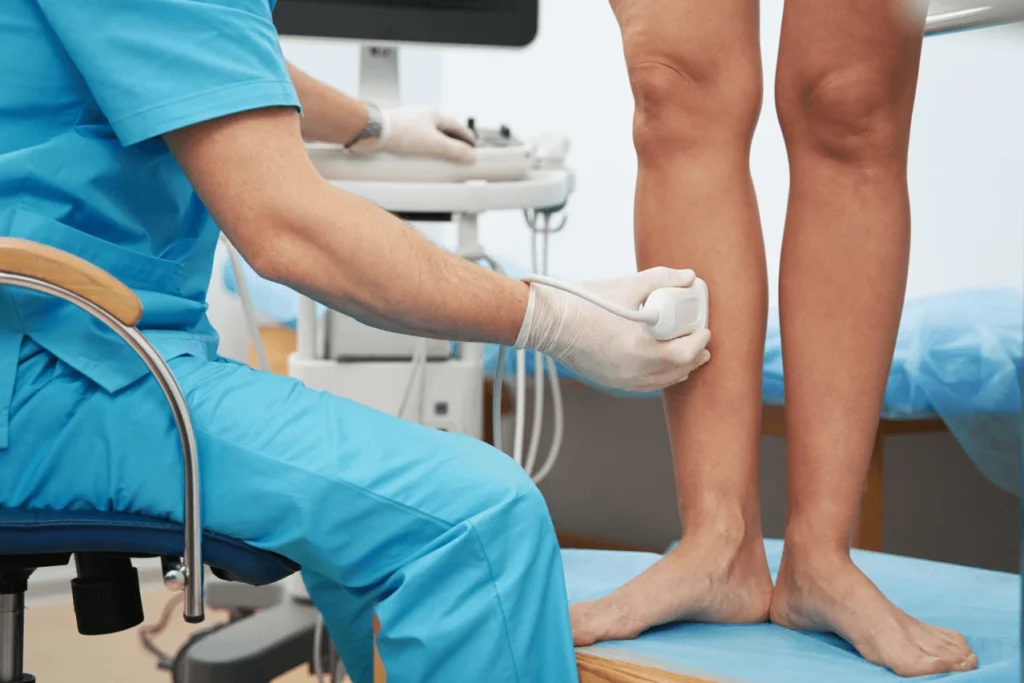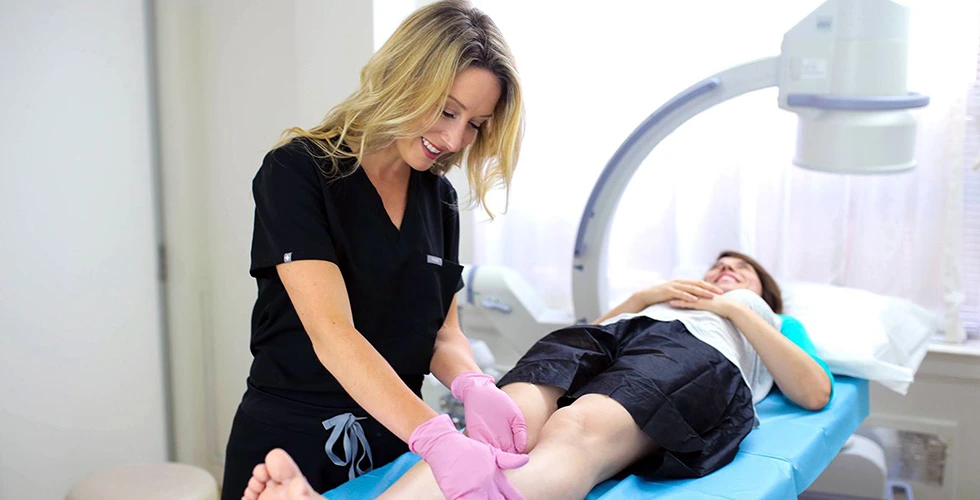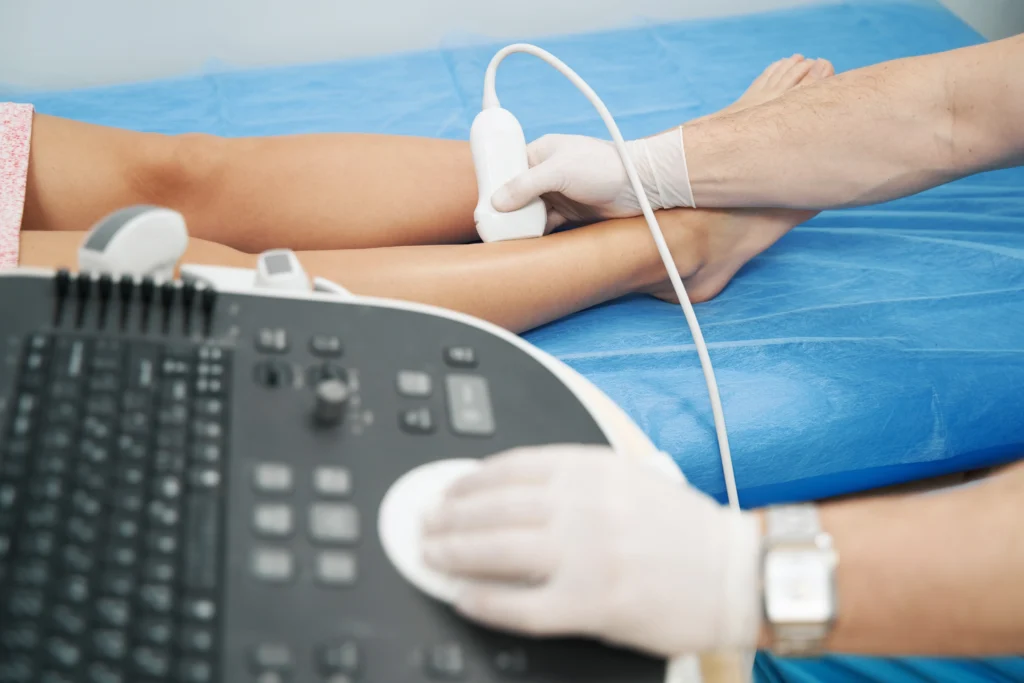If you’ve ever looked down at your legs, arms, or hands and wondered, “why are my veins so visible?” You’re not alone. Many people experience this issue, and it can be both concerning and cosmetically unappealing. In this article, we discuss the possible reasons behind visible veins, the potential health issues they indicate, and how Maryland Vein Clinic can help.

Common Causes of Visible Veins
1. Genetics and Family History
A family history of varicose veins or spider veins can play a significant role in your likelihood of developing visible veins. This hereditary predisposition is often due to inherited weaknesses in the vein walls or valves, which can cause blood to pool in the veins and make them more noticeable. The genetic component of visible veins can also be influenced by factors such as skin type, body weight, and overall vascular health.
2. Prolonged Sitting or Standing
Extended periods of sitting or standing can contribute to the development of visible veins, especially in the legs. When you sit or stand for long durations, gravity causes increased pressure on the veins in your legs. This pressure leads to blood pooling in the veins, which in turn can result in more prominent, visible veins. To help counteract this effect, it is essential to take regular breaks, stretch, and move around throughout the day.
3. Hot Weather
Hot weather has a direct impact on blood vessels, causing them to expand and increase blood flow near the skin’s surface. This dilation of blood vessels can make veins more noticeable, particularly in the legs, hands, and arms. To minimize the effects of hot weather on visible veins, it is advisable to stay well-hydrated, wear loose-fitting clothing, and avoid prolonged exposure to the sun.
4. Aging
Aging can lead to a range of changes in the body, including the appearance of more visible veins. As you age, your skin loses its elasticity and becomes thinner, making veins more apparent. Additionally, the walls and valves of veins may weaken over time, causing them to bulge and become more visible. Maintaining a healthy lifestyle, including regular exercise and a balanced diet, can help mitigate some of the effects of aging on your veins.
5. Hormonal Changes
Hormonal fluctuations during pregnancy, menstruation, or menopause can contribute to the appearance of visible veins. These changes can lead to increased blood volume, which in turn puts more pressure on the veins. This additional pressure can cause veins to become more prominent, especially in the legs. In some cases, hormonal treatments or medications can help alleviate these symptoms.
Health Issues Associated with Visible Veins
1. Varicose Veins
Varicose veins are enlarged, swollen, and twisted blood vessels that are visible beneath the skin, typically appearing blue or dark purple. They often occur in the legs and are caused by weakened vein walls and valves, which allow blood to pool instead of flowing efficiently back to the heart. Common symptoms of varicose veins include aching, heaviness, and discomfort in the affected area, as well as itching, skin discoloration, and restless legs. If left untreated, varicose veins can lead to more serious health issues, such as venous ulcers, skin changes, and an increased risk of blood clots.
2. Spider Veins
Spider veins, also known as telangiectasias, are small, dilated blood vessels that appear close to the skin’s surface. They can be red, blue, or purple and often resemble a spider’s web or tree branches. Spider veins are typically not painful or harmful, but they can be a cosmetic concern for many people. They are commonly found on the legs, face, and chest, and are often caused by factors such as genetics, hormonal changes, sun exposure, and aging.
3. Deep Vein Thrombosis (DVT)
Visible veins can sometimes be a sign of a more severe condition, such as deep vein thrombosis (DVT). DVT occurs when a blood clot forms in one of the deep veins, usually in the leg, but it can also occur in the arms, pelvis, or other deep veins. This condition can be potentially life-threatening, as the blood clot may break loose and travel to the lungs, causing a pulmonary embolism. Symptoms of DVT may include sudden swelling, pain, warmth, and redness in the affected limb.
4. Chronic Venous Insufficiency (CVI)
Chronic venous insufficiency (CVI) is a condition in which the veins do not effectively return blood from the legs to the heart, causing blood to pool in the legs. This pooling can lead to a variety of symptoms, such as swelling, pain, varicose veins, and changes in skin color and texture. CVI can be caused by damage to the valves in the veins, blood clots, or other factors that affect blood flow. If left untreated, CVI can result in more severe complications, including venous ulcers, cellulitis, and an increased risk of blood clots.
When to Consult a Vein Specialist
If you’re concerned about your visible veins or experiencing pain, discomfort, or swelling, it’s essential to consult a vein specialist. At Maryland Vein Clinic, our board-certified vein doctors diagnose the root cause of your spider veins or varicose veins using duplex ultrasound. We then curate a personalized treatment plan to address your specific needs.
At Maryland Vein Clinic, we understand the importance of making vein treatments accessible and affordable. That’s why we offer free insurance verification even before your first appointment. Our clinic is conveniently located at 10215 Fernwood Rd, Suite 301, Bethesda, Maryland, just outside of Washington, DC in Silver Spring, Maryland.
Don’t let visible veins hold you back – contact us today to schedule your consultation and begin your journey to healthier, more comfortable legs.





